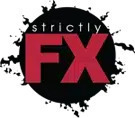Exploring the Mesmerizing World of Laser FX: Innovation, Applications, and Impact
Description
Resource summary
Page 1
Exploring the Mesmerizing World of Laser FX: Innovation, Applications, and Impact
In the realm of modern technology, few innovations capture the imagination quite like laser effects, or Laser FX. These stunning displays of light and color have permeated various industries, from entertainment and concerts to research and medical procedures. In this article, we embark on a journey to explore the intricacies of Laser FX, delving into their origins, evolution, applications, and the impact they’ve had on society. Origins and Evolution: The concept of lasers, short for Light Amplification by Stimulated Emission of Radiation, dates back to the early 20th century, with theoretical groundwork laid by scientists such as Albert Einstein. However, it wasn’t until the 1960s that practical laser technology began to emerge. The invention of the first working laser by Theodore H. Maiman in 1960 marked a pivotal moment in the history of technology, opening the door to a myriad of applications, including Laser FX. Early laser displays were rudimentary, often consisting of simple geometric patterns projected onto surfaces. However, as technology advanced, so too did the sophistication of Laser FX. Today, modern laser systems boast an array of capabilities, including high-definition graphics, three-dimensional projections, and synchronization with sound and music. Technical Aspects: At the heart of Laser FX lies the laser projector, a device capable of emitting intense beams of coherent light. These projectors typically utilize various types of lasers, including gas lasers, solid-state lasers, and semiconductor lasers, each offering unique advantages in terms of power, efficiency, and wavelength. One of the key components of a laser projector is the scanner system, responsible for directing the laser beams with precision and speed. Early scanners relied on mechanical mirrors, which limited their performance and speed. However, modern laser projectors utilize advanced galvanometer-based scanners, capable of rapid movement and intricate patterns. Additionally, Laser FX systems often incorporate sophisticated control software, allowing for the creation, editing, and playback of complex laser shows. These software packages offer a wide range of features, including timeline-based programming, graphical interfaces, and live control capabilities, empowering designers to unleash their creativity and bring their visions to life. Applications: The versatility of Laser FX has led to their widespread adoption across numerous industries and applications. In the realm of entertainment, laser light shows have become a staple of concerts, festivals, and nightclub performances. From pulsating beams of light dancing to the rhythm of music to elaborate laser animations synchronized with theatrical performances, Laser FX add an extra dimension of visual spectacle to live events. Moreover, Laser FX have found utility beyond entertainment, with applications in fields such as education, advertising, and art. In educational settings, laser demonstrations are used to illustrate principles of optics, physics, and mathematics, captivating students and fostering a deeper understanding of scientific concepts. In advertising, laser projections are employed to create eye-catching displays and promotional campaigns, leveraging the mesmerizing allure of Laser FX to attract attention and engage audiences. Furthermore, artists and designers have embraced Laser FX as a medium for creative expression, pushing the boundaries of visual artistry and immersive experiences. From large-scale outdoor installations to intimate gallery exhibitions, laser art showcases the interplay of light, space, and perception, inviting viewers to explore new realms of imagination and sensory stimulation. Impact on Society: The impact of Laser FX extends far beyond mere entertainment or artistic expression. These dazzling displays of light and color have the power to evoke emotions, inspire wonder, and foster a sense of unity and shared experience. In a world increasingly dominated by digital screens and virtual interactions, Laser FX offer a tangible and visceral form of engagement, transcending language and cultural barriers to connect people on a primal level. Moreover, Laser FX play a vital role in scientific research and technological innovation, driving advancements in fields such as optics, photonics, and materials science. From cutting-edge laser spectroscopy techniques to the development of laser-based medical devices, lasers continue to revolutionize our understanding of the natural world and expand the boundaries of human knowledge. In conclusion, Laser FX represent a remarkable fusion of art, science, and technology, captivating audiences and pushing the boundaries of creativity and innovation. As we continue to harness the power of lasers and explore new frontiers of possibility, one thing remains certain: the mesmerizing allure of Laser FX will continue to dazzle and inspire generations to come. Conclusion: In the ever-evolving landscape of technology and creativity, Laser FX stand as a testament to the ingenuity and imagination of humanity. From their humble beginnings to their current prominence across various industries, Laser FX have captivated audiences and transformed the way we perceive and interact with light. As we look to the future, the potential applications and impact of Laser FX are limited only by our imagination, promising a world illuminated by the boundless possibilities of laser technology.
Want to create your own Notes for free with GoConqr? Learn more.

